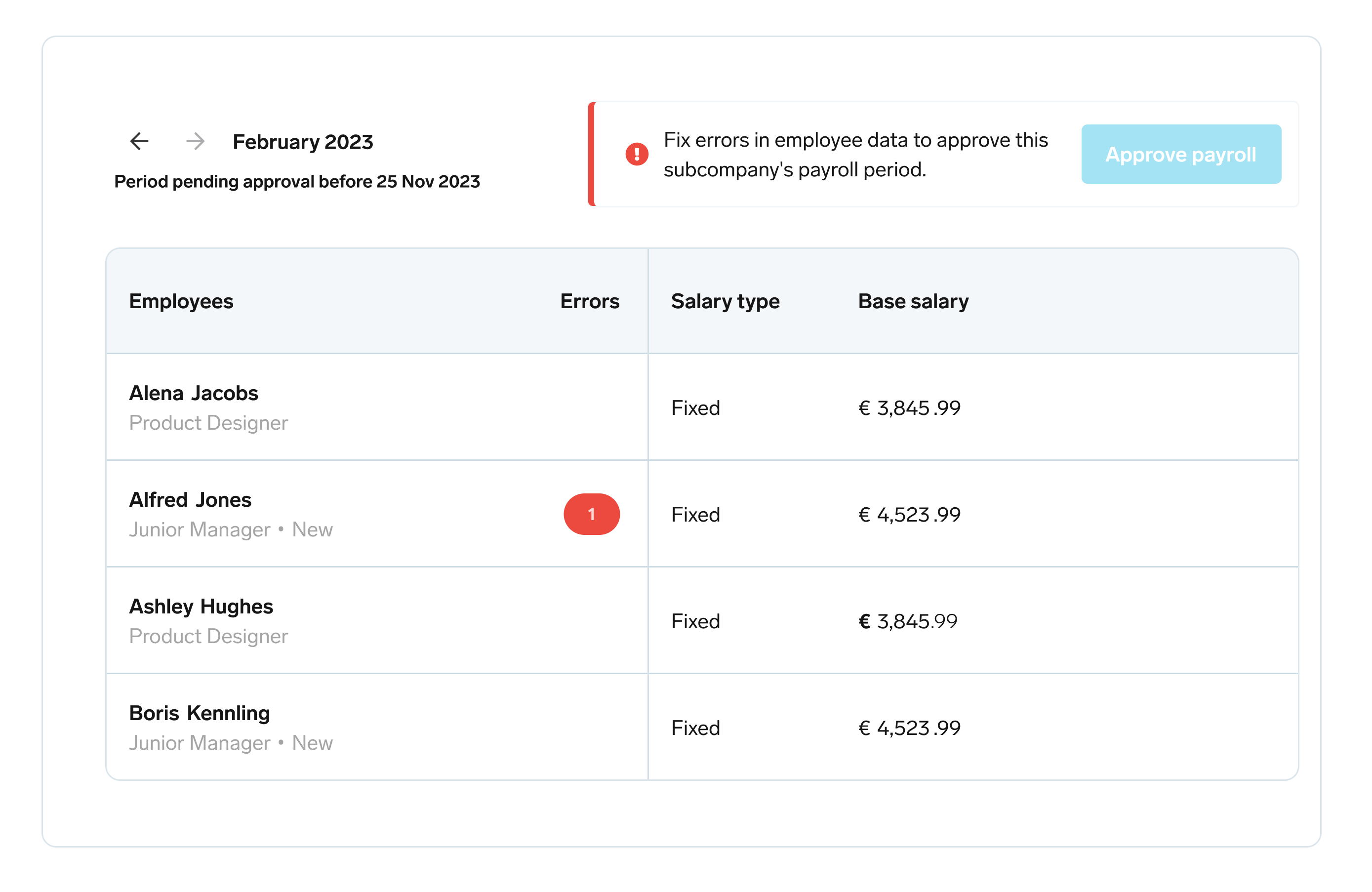
Start simplifying your payroll management
Learn how to streamline your payroll process to save time and ensure accuracy.
Read our guideHow Much is Redundancy Pay for Employers?

In this article, we offer the essentials that British employers need to know about redundancy pay. Why does it matter, though? In a perfect world, companies would carry on growing without end. Sadly, that is often not the case, and tough economic times and financial losses can mean drastic measures need to be taken.
So, what happens and how much do you owe when staff becomes redundant? Let us help.
Curious about costs? Read more in our guide about ‘the cost of doing nothing’ today.What Is Redundancy Pay?
When an employee is made redundant and, depending on certain conditions, they may be entitled to statutory redundancy pay. If an employee has been working at your organization for over two years, their pay will be determined in part by their age (as well as their length of service at your company).
This means they would receive:
Half week’s pay for every full year of service under the age of 22
One week’s pay for every full year over 22 (but under the age of 41)
One and half week’s pay for every year worked over the age of 41
In general, the length of service for an employee is capped at 20 years. These numbers are reflective of the gov.uk website’s current outlining of the policy surrounding redundancy pay in the UK.
How Much Is Paid Out?
As of April 6th, 2020 the maximum amount of a ‘week’s pay’ to calculate redundancy pay increased from £525 to £538. However, you can give your staff extra redundancy pay if you want to, or have a qualifying period of fewer than two years. It is also worth noting that redundancy pay (including any severance pay) under £30,000 is not taxable.
Do All Employees Qualify For Redundancy Pay?
There are exceptions, though. If you offer an employee the opportunity to stay, or you offer them alternative work, then they are not eligible for statutory redundancy pay.
Redundancy In The UK: More Topics
We have written before about the various considerations employers and organizations need to make when it comes to redundancy. Here are some helpful links to help you learn more:
When Is Redundancy Pay Paid Out?
Redundancy pay must be paid over and above the employee’s notice period, as stated in their contract. Employees can be required to work their notice period, or they could be given payment in lieu of notice.
What Is The Notice Period For Redundancy?
The statutory redundancy notice periods are at least one week’s notice if an employee has worked more than one month and less than two years. Thereafter, it goes up to one week’s notice per year until 12 years’ service, when 12 weeks’ notice is required regardless of the number of years over and above 12 years.
As an employer you may provide more notice than the statutory minimum, but not less.
Centralise your employee data

Stop relying on lists and spreadsheets. Organise and edit personnel files and documents with ease, all in one secure, legally compliant place.
Protect your people filesWhat If An Employee Is Dismissed Without Notice?
It is worth noting that if an employee is dismissed with notice, that notice period may take their number of years of service into a new year, and they must be compensated for this year.
In addition, according to nidirect government services, "statutory redundancy pay is also due when a fixed-term contract of two years or more expires and is not renewed because of redundancy.”
What is the Difference Between Redundancy Pay and Severance Pay?
A severance package or a layoff package is a financial offer made by an employer when letting an employee go which can be provided as an alternative to a redundancy package, or in other circumstances.
It usually includes:
Statutory redundancy pay, and
Payment in lieu of notice
It can also include:
Pension payments
Stocks or shares
Additional (negotiated) bonuses or discretionary amounts.
There is no ‘average severance package’ value, as it depends entirely on the employee’s contract, the nature of the dismissal, and the employee’s seniority. However, severance pay packages (particularly in the case of voluntary redundancy) are often larger sums than statutory redundancy pay.
What Happens if You Can’t Afford Statutory Redundancy Payments?
According to gov.uk, “If your business would become insolvent as a result of making the statutory redundancy payments, the Insolvency Service’s Redundancy Payments Service may be able to help.” You can call the Redundancy Payments Helpline on 0330 331 0020 for more information.
Centralise your employee data

Stop relying on lists and spreadsheets. Organise and edit personnel files and documents with ease, all in one secure, legally compliant place.
Protect your people filesEmployee Rights: What Do Employers Have to Do?
Employees have certain rights when they are under notice of redundancy, including the right to reasonable time off to look for a new job or arrange training and the right not to be unfairly selected for redundancy, as well as entitlement to redundancy pay under certain circumstances.
Employers also have to take steps to avoid compulsory redundancies and offer alternative work (with a four-week trial period). You are also required to give your employees a statement showing how their redundancy payment was calculated.
Regardless of the circumstances surrounding redundancies, it is not only important to follow the rules and guidelines laid out by the government as well as your company’s own policies and conscience, it’s also critical to document the process!
